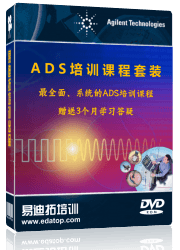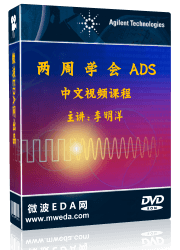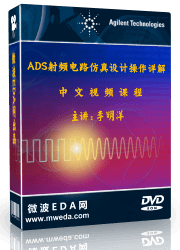- 易迪拓培训,专注于微波、射频、天线设计工程师的培养
Using DC Block/Feed in ADS Schematic
DC Blocks which you place in labaratory is actually real capacitors which you use in circuits to prevent unwanted signals from entering to either port(terminal) of your device. Those components will be replaced by real inductors and capacitors serving the same purpose in your circuit.
When you talk about realistic, things get much more complicated; because now you have to think more than just designing(ie. tolerances of components effect your design, heat compensation techniques, so on so forth)
Even a DC block in real life has a model.If you would get a realistic results, you should always use equivalent models instead of ideal ones..
( I hope well understood your question )
We often design from "raw sketch" to accurate, fine detail.
For the early steps, we need to keep away DC bias from the 50 Ohm terminals, that's what a DC block is good for in simulation.
Thanks guys, I guess my labs in school just neglected to follow through with designing the circuit completely (to use volker@muehlhaus's terminology, we never really got past the "raw sketch" to make our designs "accurate w/ fine detail"
申明:网友回复良莠不齐,仅供参考。如需专业帮助,请学习易迪拓培训专家讲授的ADS视频培训课程。
上一篇:Load-Pull Simulation in ADS - Convergence Problem -
下一篇:How can I simulate tapping point in ADS?
ADS中文视频培训教程 | More...
 国内最全面、最专业的Agilent ADS培训课程,可以帮助您从零开始,全面系统学习ADS设计应用【More..】
国内最全面、最专业的Agilent ADS培训课程,可以帮助您从零开始,全面系统学习ADS设计应用【More..】
- Agilent ADS教学培训课程套装
- 两周学会ADS2011、ADS2013视频教程
- ADS2012、ADS2013射频电路设计详解
- ADS高低阻抗线微带滤波器设计培训教程
- ADS混频器仿真分析实例视频培训课程
- ADS Momentum电磁仿真设计视频课程
- ADS射频电路与通信系统设计高级培训
- ADS Layout和电磁仿真设计培训视频
- ADS Workspace and Simulators Training Course
- ADS Circuit Simulation Training Course
- ADS Layout and EM Simulation Training Course
- Agilent ADS 内部原版培训教材合集









 沪公网安备 31011202014168号
沪公网安备 31011202014168号
 1427313829
1427313829 旺旺在线
旺旺在线 Skype Online
Skype Online 13761612886
13761612886 官方淘宝店
官方淘宝店
